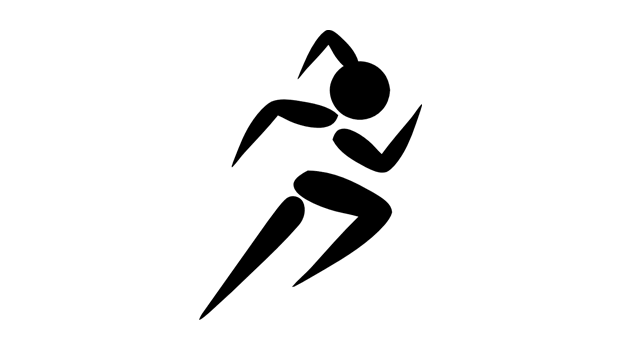Last year in Trinity College Dublin, over sixty sports scholarships were awarded to athletes who had achieved outstanding ability in various sports. Out of these sixty, as few as one in four sports scholarships were awarded to women. Rugby being the worst offending sport, not a single female rugby player received a scholarship and yet thirty rugby scholarships were awarded to men’s rugby. These findings, published recently in the Sunday Independent on October 4, beg the question as to why female athletes are being so disproportionately overlooked.
While these statistics may be recent, the imbalance is altogether unsurprising and perhaps reflective of the relatively recent inclusion of women in the sporting world. DULFC, Trinity’s ladies rugby team, was not established until 1996. Its male counterpart was established 142 years previously, in 1854. However, the truth these figures present has raised concerns among women’s sports advocates and student sport representatives. Male students are dominating sports scholarship programmes throughout the country, including at Trinity, suggesting a systematic funding imbalance for sporting women in college and a concern for women’s sport at large.
As I have put men’s rugby on the chopping block, it is only fair to allude to the Irish rugby team’s recent victories at the Rugby World Cup. Their current success at top level would suggest that the funding, scholarships and careful attention given to men’s rugby has, indeed, paid off. No doubt, this success is of great importance for the morale of our small nation and for Irish sport itself. But what expense does women’s sport pay to build the road to men’s victory?
Equal funding across the Atlantic
In 1972, the American government passed the Educational Amendments, signed by President Nixon. One section of this law, Title IX, prohibits state funding of any educational institution if they do not fund male and female sports equally. It states, “No person in the United States shall, on the basis of sex, be excluded from participation in, be denied the benefits of or be subjected to discrimination under any education program or activity receiving federal assistance.” This radical measure ensured American women and girls more access to facilities and funding than ever before and as a result female sport benefited hugely from higher sports participation rates. In Ireland, no such amendment to prohibit discrimination exists and many women’s sports advocates believe that similar legislation to Title IX would be the key to creating opportunity. It is clear, we have much to do to create the superstructure where men’s and women’s sports can exist on a more equal footing in terms of funding, participation and media exposure.
The governing body of third level sport, Student Sport Ireland, said that the number of sports scholarships awarded seemed to reflect the gap in participation levels of females compared to males. Given the high drop-out rate of teenage girls in sports, potentially a symptom of gender expectations, the disparity between genders in university sports scholarship programmes is possibly an equal representation of the demands of the students themselves. The demand amongst male applicants is considerably higher. The disproportion in numbers of male to female college athletes reflected in the statistics above is not dissimilar to that which prevailed in the US, prior to Title IX. This goes to show that change is possible and the resulting benefit to female sport, immeasurable. When university sporting bodies are considering the apportionment of sports scholarships it seems unlikely that gender, rather than merit, is a factor of influence and therefore, instead of tackling university sports programmes we should address the social policy issue and promotion, or lack thereof, of women’s sport.
Lack of media coverage
The lack of promotion that women’s sport receives, despite substantial success, is usually due to the biased concept among major media broadcasters that the women’s game will not be of the same standard or interest to the viewers as the men’s. A study conducted by the University of Birmingham discovered that in England, 97% of sport coverage in 2013 was of men’s sport. Birmingham’s researchers believe that this extraordinary underreporting of women’s sports has perhaps marred, or at least not encouraged, the interest of women to participate in competitive sports.
A website dedicated to the coverage of women’s sport, sportswomen.ie, aims to turn the tide against gender bias in media coverage. Sport affords women the opportunity to exhibit strength and dedication, an empowering image seldom attributed enough to women by the media. Sportswomen.ie believes that, by showing that women are capable of mental, physical and emotional strength in the sports arena, it will testify that they are also well capable in other arenas such as business, politics, etc. Research conducted by the Women’s Sport Foundation, founded by Billie Jean King, former world no.1 tennis player, revealed that girls who play sports are more likely to get better grades and to graduate than girls who do not play sports. Girls and women who play sports have higher levels of confidence, self-esteem and lower levels of depression, a more positive self-image and experience higher states of psychological well-being than girls and women who do not.
It is imperative to the cause of real social change that we do not view women’s sport as victimised, but as empowered. Women who play sport should not be expected to masculate themselves in order to be considered on an equal playing field to men. Rather, we must alter the perception attributed to women’s sports in the media and beyond, and with equal funding supported by legislation, mobilize more women to fulfil their potential. We must recognise that the continual overlooking of women in sport excludes them from the capacity to develop their potential, in every area of sport.







